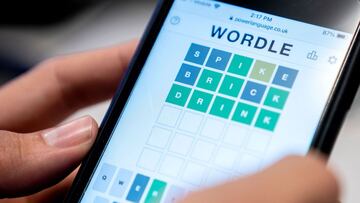How much did Wordle sell for? Who bought Wordle?
The smash hit online word guessing game was created by Josh Wardle last year and has built an astonishing following with its simple no-frills format.


Last month is was confirmed that the popular online puzzle Wordle had been bought by The New York Times for a fee of more than $1 million. The word guessing game first appeared on a simple, ad-free website back in October 2021 and has built a legion of millions of daily players.
The purchase was first announced on Monday, 31 January as the creator, Brooklyn-based software engineer Josh Wardle, confirmed that it had been sold for a price “in the low seven figures.” The game will remain free-to-play for now but no long-term assurances have been given.
The game requires users to uncover a new five-letter word every day, with up to six chances to guess and a row of different coloured blocks to represent the accuracy of each letter in the guessed word. The game became a viral hit on Twitter at the start of 2022, thanks in large part to a clever feature that allows users to share their Wordle performance to followers without revealing the word itself.
“The Times remains focused on becoming the essential subscription for every English-speaking person seeking to understand and engage with the world,” read a statement released by The New York Times. “New York Times Games are a key part of that strategy.”
42% of Wordle players use a starter word.
— YouGov (@YouGov) February 3, 2022
The top 5 most common starter words are:
1. ADIEU
2. AUDIO
3. RAISE
4. STARE
5. TEARShttps://t.co/LyO6nikA5E pic.twitter.com/xVuHHZQ3Y1
How was Wordle invented?
Newly minted millionaire Josh Wardle knew that his partner enjoyed word games and used his experience in software development to make a simple guessing game for the two of them to play together. Taking inspiration from his own surname he named it Wordle and introduced it to members of his family WhatsApp group.
But after a few months, and having noticed his family’s growing obsession with the game’s simple format, he decided to make it playable for the general public last October. On 1 November 2021, 90 people played that day’s Wordle puzzle.
I’m happy for Mr. Wordle. He made a game for his partner because she loved word games, then he shared it with all of us for nothing. Now he gets a million unexpected dollars. Because he loved someone!
— Caissie (@Caissie) January 31, 2022
Related stories
Less than three months later, it was reported than the game had amassed close to three million regular players and new versions of the game are constantly popping up in new languages to cater for an ever-growing global audience.
Part of the game’s appeal is the charmingly low-tech feel to it, a simple boxed interface on a white page with six rows of five squares. At the bottom there is a QWERTY keyboard and that’s about it, aside from a button at the top that lets you view your historic performance. That simplicity remains central to its charm and fans will hope that it is maintained under the new ownership.
